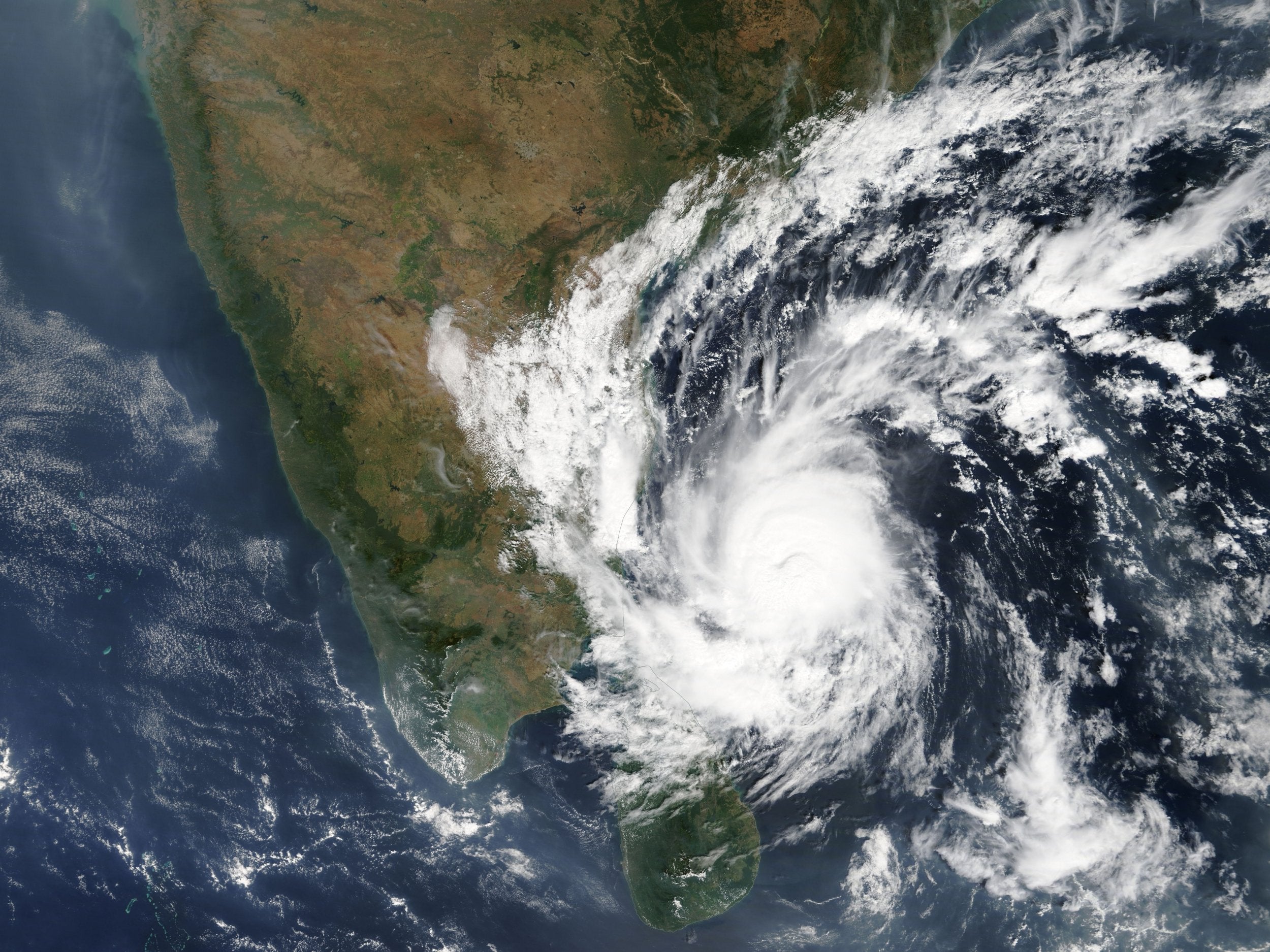Cyclone Gaja hits southern India killing at least 20 after 80,000 evacuated
Schools have been shut across Tamil Nadu state and boats ordered not to enter rough seas

Your support helps us to tell the story
From reproductive rights to climate change to Big Tech, The Independent is on the ground when the story is developing. Whether it's investigating the financials of Elon Musk's pro-Trump PAC or producing our latest documentary, 'The A Word', which shines a light on the American women fighting for reproductive rights, we know how important it is to parse out the facts from the messaging.
At such a critical moment in US history, we need reporters on the ground. Your donation allows us to keep sending journalists to speak to both sides of the story.
The Independent is trusted by Americans across the entire political spectrum. And unlike many other quality news outlets, we choose not to lock Americans out of our reporting and analysis with paywalls. We believe quality journalism should be available to everyone, paid for by those who can afford it.
Your support makes all the difference.At least 20 people have died after Cyclone Gaja made landfall in southern India on Friday morning, bringing heavy rain and winds of up to 125kmph (75mph).
More than 80,000 residents had been evacuated from low-lying areas on the eastern coast of Tamil Nadu state, the local government said, but Gaja hit with the force of a severe cyclonic storm.
Gaja has since weakened to a cyclonic storm and is passing across the southern tip of India to the west, a bulletin from the Indian Meteorological Department. It is likely to weaken into a “deep depression” by Friday night as it brings heavy rain to Kerala before moving off into the Arabian Sea.
Those who died were mostly killed by trees uprooted by the strong winds, or collapsing roofs and walls. A three year old boy was believed to be the youngest killed, at Adiramapattinam, while a A 67-year-old retired man died when he was hit by a falling tree in Pulangudi.
Schools have been shut across the state and with rough seas, fishermen have been advised not to enter the Bay of Bengal since Sunday. More than 470 relief centres have been receiving evacuees across six districts.
The storm also felled a number of power lines, and authorities disconnected electricity from some of the worst-hit areas to avoid electrocutions.
Heavy rain damaged paddy crops and strong winds uprooted banana and papaya trees along the coastline, while many roads also suffered damage. Vehicles remained off the highways in most parts of Nagapattinam and Karaikal districts, the Press Trust of India news agency reported.
Speaking to reporters in a news conference in Salem, Tamil Nadu’s chief minister K Palaniswami said relief work had already begun and that the state was on a “war-like footing”, with thousands of workers on standby.
They include two naval ships deployed to the coast with divers, helicopters and inflatable boats.
He also announced that the families of the deceased will be provided Rs 100,000 (£1,085) each from a public relief fund.
Southern India’s cyclone season runs from April to December. In October, Cyclone Titli killed at least two people in Odisha state.
In late 2017, Tamil Nadu and Kerala were hit by Cyclone Ockhi, the most powerful storm to hit the region in the past three years, causing an estimated £2.3bn in damage and killing around 250 people.
Join our commenting forum
Join thought-provoking conversations, follow other Independent readers and see their replies
Comments